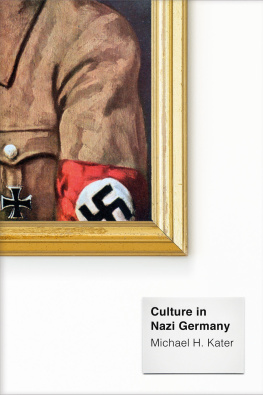Oxford University Press is a department of the University of Oxford. It furthers the Universitys objective of excellence in research, scholarship, and education by publishing worldwide. Oxford is a registered trade mark of Oxford University Press in the UK and in certain other countries
All rights reserved. No part of this publication may be reproduced, stored in a retrieval system, or transmitted, in any form or by any means, without the prior permission in writing of Oxford University Press, or as expressly permitted by law, by licence or under terms agreed with the appropriate reprographics rights organization. Enquiries concerning reproduction outside the scope of the above should be sent to the Rights Department, Oxford University Press, at the address above
You must not circulate this work in any other form and you must impose this same condition on any acquirer
Printed and bound in Great Britain by Clays Ltd, Elcograf S.p.A.
Links to third party websites are provided by Oxford in good faith and for information only. Oxford disclaims any responsibility for the materials contained in any third party website referenced in this work.
Acknowledgements
The nobility are keepers of gleaming stories, symbols, and legends. Moreover, they offer an opportunity to read the twentieth century from a perspective that is rarely taken. As a student, doctoral candidate, and lecturer in Berlin I had the privilege of discussing this perspective time and time again with the undisputed king of research on the German nobility. I thank Heinz Reif for his support over almost thirty years. To none of my academic teachers do I owe more than to him.
Among my close friends, I am especially indebted to Robert Gerwarth and Daniel Schnpflug. My thanks are due to John Steel and Tessa David, without whom an English language edition of this book would not exist. I thank Jon Andrews for his translation of a manuscript riddled with the curious jargon of the nobility. I am grateful to Jonathan Wright for his critique of the manuscript and to Matthew Cotton for his supervision of the entire project.
Over the course of my Irish and British years, both the book and its author received support of various kinds from friends, colleagues, and students, without whom nothing would be as it is. They are, among others: Pertti Ahonen, Ren Behm, Donald Bloxham, Gisela Bock, Jan Bockelmann, Tim Buchen, Ewen Cameron, Emile Chabal, Sebastian Conrad, Fabrice dAlmeida, Laura Di Gregorio, Enda Delaney, Jacques Ehrenfreund, Detlef Felken, Roy Foster, Porscha Fermanis, Fabian Hilfrich, Oliver Janz, Ian Kershaw, Florian Kaplick, Linda Kizico Hudan, Georg H. Kleine, Anita Klingler, Astrid Koeditz, Martin Kohlrausch, Tsiona Lida, Tobias Lock, Nathan Low, John MacBratney, Robert Mason, Jean-Claude Micha, Stefanie Middendorf, Sarah Moor, A. Dirk Moses, David Motadel, William Mulligan, Kiran Klaus Patel, Silke Pfeiffer, Marcellus Puhlemann, Hans-Peter Rouette, Julius Ruiz, Oliver Schmidt, Wolfgang Schnpflug, Alexander Sedlmaier, Thorsten Stecher, Rdiger v. Treskow Karina Urbach, Tereza Valny, Barbara Wenner, Norbert Wuthe, and Akhila Yechury.
It is thanks to Andreas, Moni, Paula, and Elias Malinowski that Berlin has remained a home and fortress for me. And Id like to thank Batrice Mariefor everything.
Contents
The nobility are masters of self-portrayal. They possess the unrivalled ability to present stylized impressions of themselves in images and legends and find storytellers who will transmit, and continually reinvent, their tales throughout the ages. In 2008, the American director Bryan Singera figure who had recently re-entered the limelight with his blockbuster Superman Returnserected a cinematic monument to one of the best-known representatives of twentieth-century German nobility. In the closing scene of the film Valkyrie, Singer and his leading man Tom Cruise resurrected a controversial version of the Resistance fighter Count Stauffenbergs execution by firing squad. According to the legend, the marksmen had to open fire twice during the night of 20 July 1944 to gun down the highly educated, charismatic driving force behind the failed rebellion against the National Socialist regime.
In Singers version of the tale, the scene that played out in the courtyard of the nerve centre of military power in Berlin becomes one of the most striking images connected with the conservative opposition to National Socialist rule. At the moment the first command was given to fireor so the story goesStauffenbergs adjutant Werner von Haeften made a dramatic gesture, throwing himself in front of his leader and intercepting the bullets with his body. Before Stauffenberg was cut down by the second salvo, he is said to have stood straight-backed and shouted, Long live the secret Germany! The victims corpses were summarily buried in a Berlin cemetery before being unearthed and incinerated shortly afterwards on Heinrich Himmlers orders, their ashes taken to the south of the city and scattered to the wind.
This scene appears to be a densely symbolic manifestation of the nobilitys irreconcilability with National Socialism. On one hand there is the Nazi killing machine embodied by Fritz Frommthe middle-class general who spinelessly betrayed the uprising and ordered the conspirators executionand by Heinrich Himmler, the prophet of a new nobility and the Fhrer of the SS who was consumed by anxious hatred as he hounded the rebels and their families and annihilated their remains. On the other hand are the victims of this murderous apparatus, the Resistance members who exhibited the nobilitys guiding principle of Haltung (bearing) in its purest form. These individuals laudable mission is encapsulated by Stauffenbergs climactic last words that pay tribute to the man he called Meister, the poet and self-declared aristocrat Stefan George. It was George who had conjured up the vision of the secret Germany, a hidden realm that would be accessible only to a privileged few. Ever since the 1920s, this evocative concept had been a watchword for the dream of forging a clandestine alliance between the wise, the noble, and the good.
Legends often contain a core of historical truth, and the fundamental disparity between the Nazis and the nobility is not just portrayed in the plotlines of evocative Hollywood films. Indeed, at least at first glance, it seems that National Socialism and the nobilitys centuries-old traditions were worlds apart and that shifting their loyalty from the Imperial Kaiser to the National Socialist Fhrer would be the last thing to attract the aristocracy. As a result of this impression, the research for this book began from a position of bewilderment. How could a group that placed such great store by tradition, perseverance, leadership experience, and a whole arsenal of positive values join forcesboth socially and ideologicallywith the twentieth-century radical Right? How could the nobilitya group with a subtle system of titles and an ancient conviction in their own superioritysuddenly bow down to a malevolent regime? And finally, how could the aristocratic belief in their inborn ability to rule allow itself to become subsumed by the lower-middle-class ideology of the racially defined









